Electric Vehicles: Future of Transportation
What is an Electric Vehicle?
- An EV is defined as a vehicle that can be powered by an electric motor that draws electricity from a battery and is capable of being charged from an external source.
- An EV includes both a vehicle that can only be powered by an electric motor that draws electricity from a battery (all-electric vehicle) and a vehicle that can be powered by an electric motor that draws electricity from a battery and by an internal combustion engine (plug-in hybrid electric vehicle).
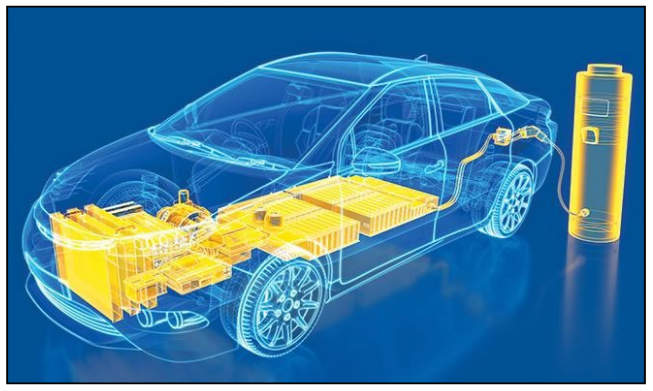
What is the history of Electric Vehicles?
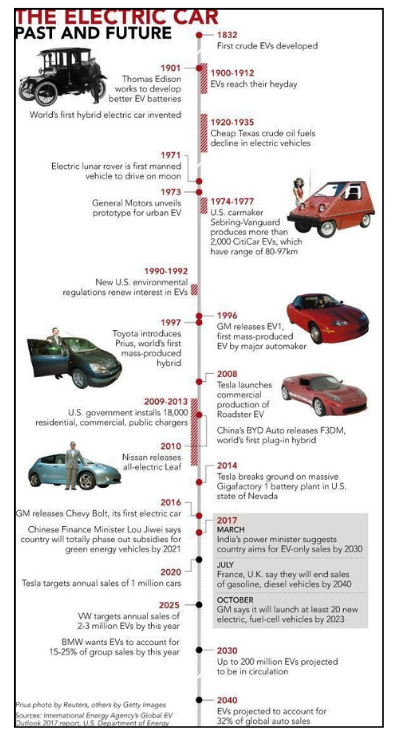
How do Electric Vehicles Work?
- All-electric vehicles, also referred to as battery electric vehicles (BEVs), have an electric motor instead of an internal combustion engine.
- The vehicle uses a large traction battery pack to power the electric motor and must be plugged into a wall outlet or charging equipment, also called electric vehicle supply equipment (EVSE).
- Because it runs on electricity, the vehicle emits no exhaust from a tailpipe and does not contain the typical liquid fuel components, such as a fuel pump, fuel line, or fuel tank.
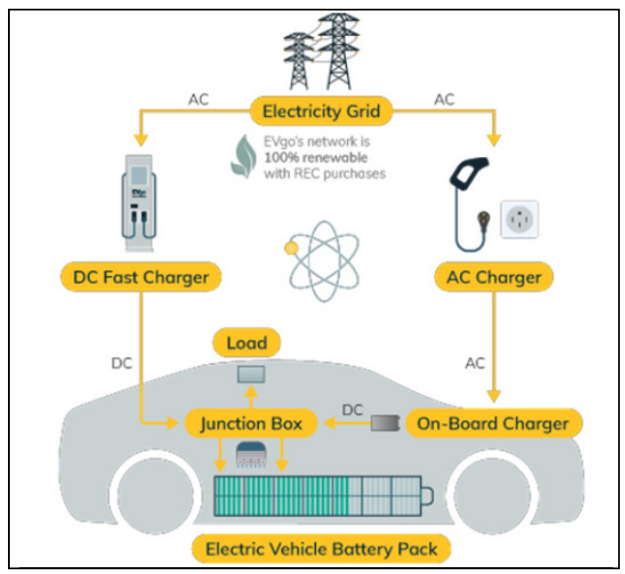
Components of Electric Vehicles:
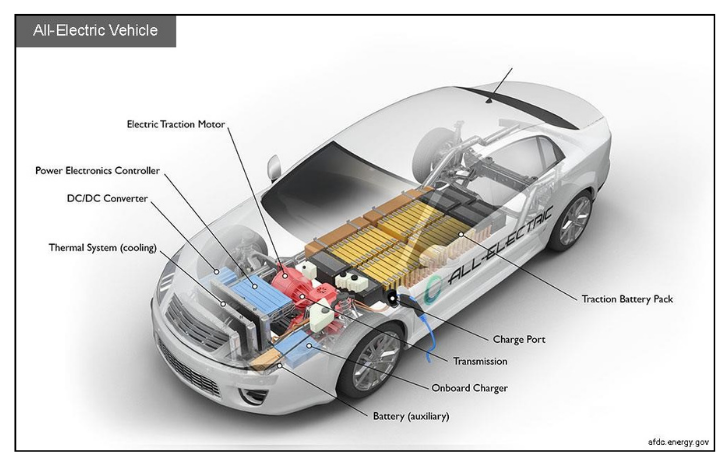
Electric Vehicles consists of following components:
1. Battery (all-electric auxiliary):
- In an electric drive vehicle, the auxiliary battery provides electricity to power vehicle accessories.
2. Charge port:
- The charge port allows the vehicle to connect to an external power supply in order to charge the traction battery pack.
3. DC/DC converter:
- This device converts higher-voltage DC power from the traction battery pack to the lower-voltage DC power needed to run vehicle accessories and recharge the auxiliary battery.
4. Electric traction motor:
- Using power from the traction battery pack, this motor drives the vehicle's wheels. Some vehicles use motor generators that perform both the drive and regeneration functions.
5. Onboard charger:
- Takes the incoming AC electricity supplied via the charge port and converts it to DC power for charging the traction battery.
- It also communicates with the charging equipment and monitors battery characteristics such as voltage, current, temperature, and state of charge while charging the pack.
6. Power electronics controller:
- This unit manages the flow of electrical energy delivered by the traction battery, controlling the speed of the electric traction motor and the torque it produces.
7. Thermal system (cooling):
- This system maintains a proper operating temperature range of the engine, electric motor, power electronics, and other components.
8. Traction battery pack:
- Stores electricity for use by the electric traction motor.
9. Transmission (electric):
- The transmission transfers mechanical power from the electric traction motor to drive the wheels.
Enlist different types of Electric Vehicles?
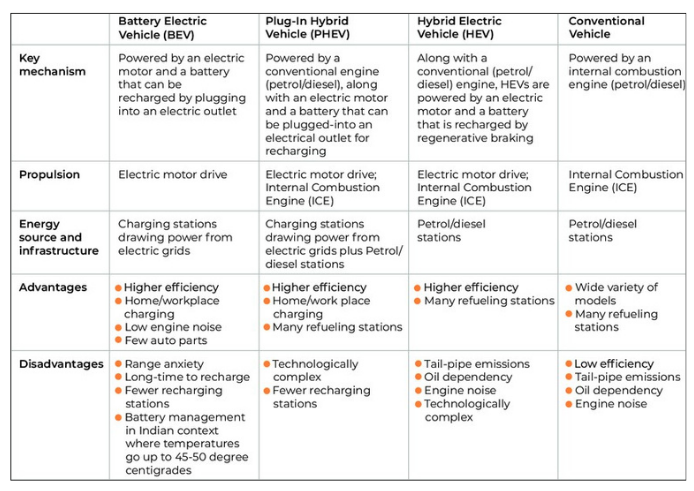
What are the advantages and disadvantages of Electric Vehicles?
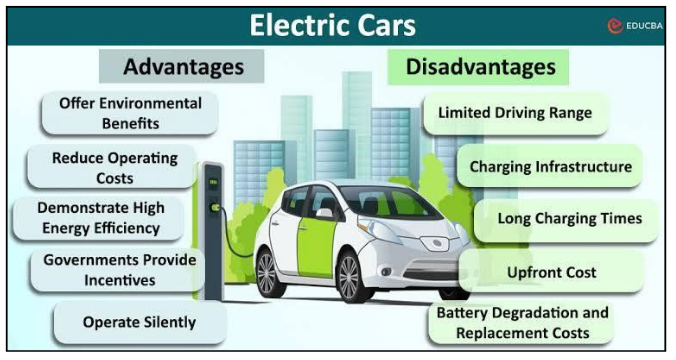
Advantage of Electric Vehicles:
| 1. Environmentally friendly |
|
|---|---|
| 2. Lower running costs |
|
| 3. Low Maintenance Costs |
|
| 4. Energy independence |
|
| 5. Charge conveniently from the comfort of your home |
 |
| 6. Reduce Noise Pollution |
 |
| 7. Easy to drive |
 |
Disadvantage of Electric Vehicles:
| 1. High cost |
|
|---|---|
| 2. Lack of Choices available for consumer |
|
| 3. Lack of charging infrastructure |
|
| 4. Blood Batteries |
|
How are Electric Vehicles different from Conventional fuel vehicles?

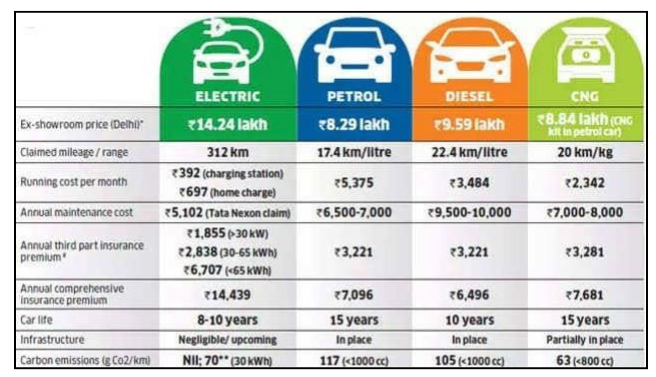
What is the status of Electric Vehicles in India?
- India is one of the world's largest markets for two- and threewheeled vehicles, ranking among the global top five for private cars and commercial vehicles.
- India's Ministry of Road Transport and Highways has claimed that 1,334,385 electric vehicles in India were on the road as of July 2022.
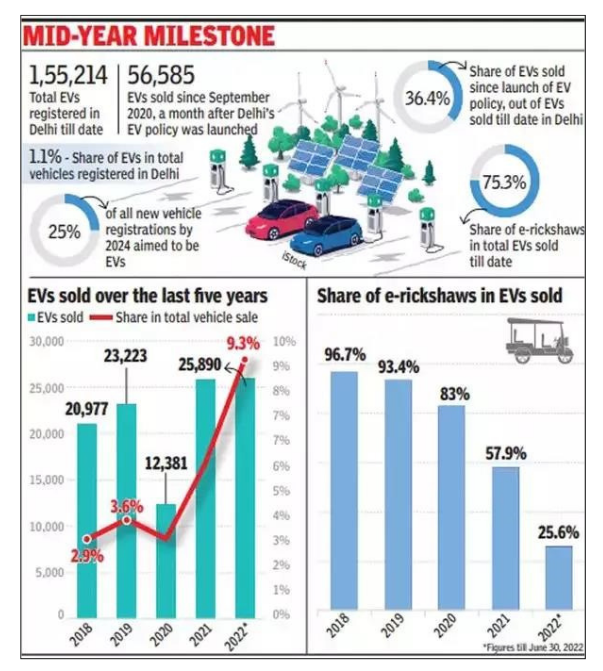
India Sets Ambitious Targets
According to Union Minister Nitin Gadkari, the Indian government intends to achieve the following EV mix in India by 2030:
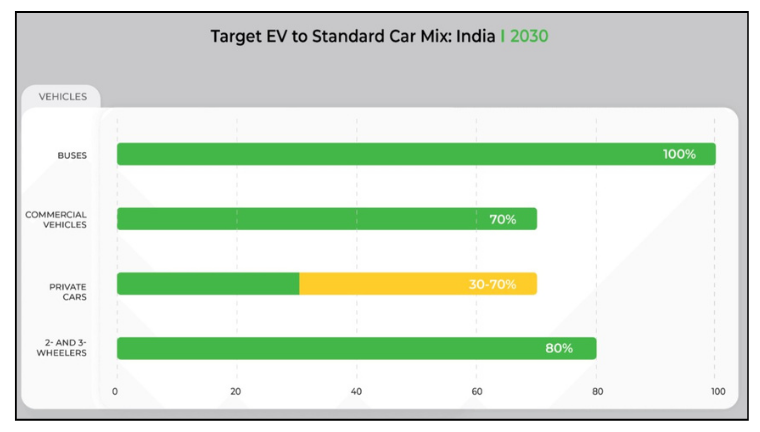
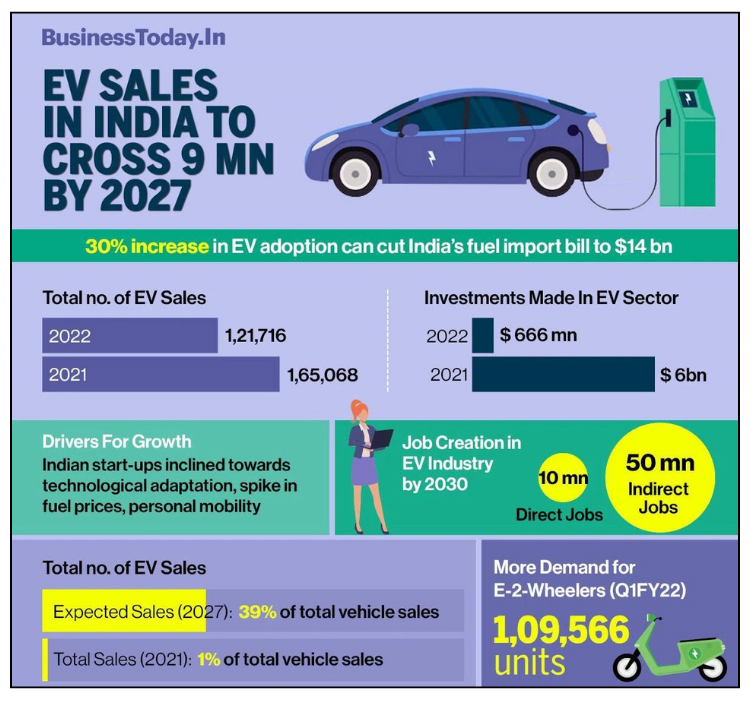
Why does India need to adopt Electric Vehicles?
| 1. Reducing Air Pollution |
|
|---|---|
| 2. Reducing Noise Pollution |
|
| 3. Improving Operational Efficiency |
|
| 4. Lowers economic burden on consumers. |
|
| 5. Reduce dependence on Petrol/Diesel |
 |
| 6. The Real Estate Sector |
|
What are the challenges faced By India in adopting Electric Vehicles?
| 1. Cost of EV |
 |
|---|---|
| 2. Extreme Weather Conditions |
|
| 3. Lack of Charging Infrastructure: |
 |
| 4. Lack of Standardization: |
|
| 5.Limited Range: |
|
| 6.Persistent Resistance to Change |
|
| 7.Lack of Clean Energy |
|
What Can India Learn from Other Countries' Success?
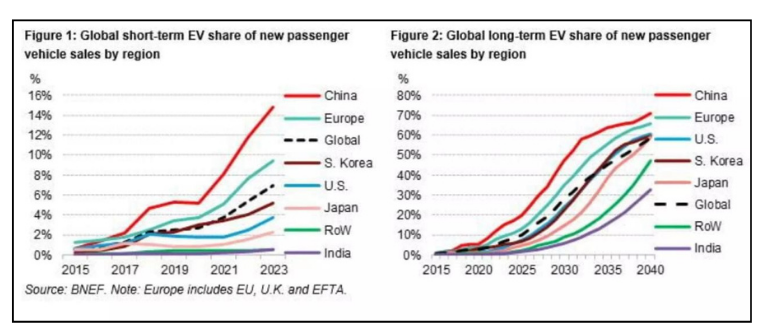
Power, infrastructure, and financing all are primary antagonists in India's EV adoption story. But the country can take cues from others already making inroads towards full EV adoption. The countries leading global EV adoption paint an interesting picture.
But players in the Indian market must come together to address consumers' concerns. They should also build a supportive ecosystem to promote the widespread adoption of EVs in India. This can be done through the development of more affordable EVs, the expansion of charging infrastructure, and the creation of awareness and education programs to educate consumers about the benefits of switching to EVs. What Can India Learn from Other Countries' Success? Power, infrastructure, and financing all are primary antagonists in India's EV adoption story. But the country can take cues from others already making inroads towards full EV adoption. The countries leading global EV adoption paint an interesting picture.
Graph-2.png
India can learn from other countries' successes and mistakes. Source: acea.auto The top countries in the graph above are all wealthy countries in northern Europe. Combined, they don't even represent 3% of India's population. This may lead us to believe that their success will be impossible to replicate in a much more diverse and densely-populated country, like India. However, China comes in second and turns that argument on its head. Let's delve into what different regions have done for EV adoption and what India can learn from these efforts.
The EU, EFTA, & UK
- In 2021, electric car registrations in the EU-27 region was 1,729,000, up from 1,061,000 in 2020, representing a 17.8% increase.
- All EU countries, including Norway, which has the highest number of registrations in a year, offered financial incentives like tax reductions and exemptions.
- India is also offering tax incentives along the same lines.
- And with favorable government policies and the presence of firstmover companies, the country will be able to improve the adoption of EVs in the next three to five years.
China
- According to the China Association of Automobile Manufacturers (CAAM), China sold 6.89 million EVs in 2022 alone.
- It also boasts the largest electric car fleet in the world: 4.6 million + electric cars on roads in China.
- This success story is attributed to generous government support as well as intense domestic competition, both of which fueled innovation and reduced car prices.
- In comparison, India is also offering support, but the domestic market is not robust and competitive yet. But that is expected to change in the coming years as the impact of the current policies becomes more widespread.
The USA
- EV car sales in the US represent 5.8% of all vehicles sold, up from 3.2% a year ago.
- However, the overall sales fell by 8% in 2022 when compared to 2021.
- Experts believe that stricter requirements for claiming federal incentives, high car prices, and concerns about raw materials for batteries were the cause of the decline.
- The EV car industry is still huge in the US, and it grew due to government investments and policies. Innovation by leading players like GM and Tesla also added to the appeal.
Enlist a few initiatives taken by India to promote adoption of Electric Vehicles?
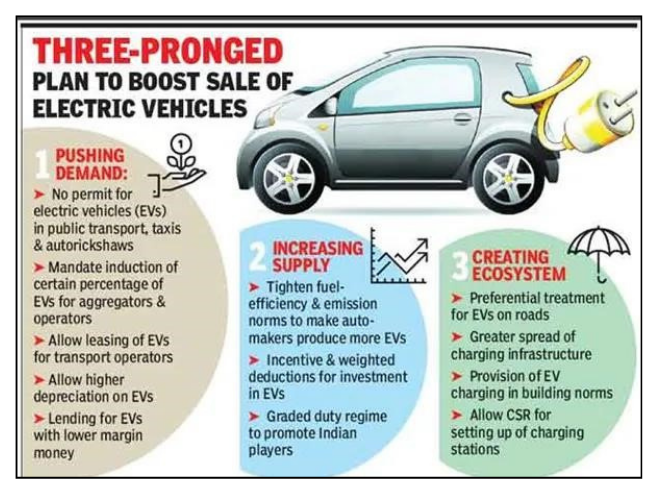
1.
National Electric Mobility Mission Plan:
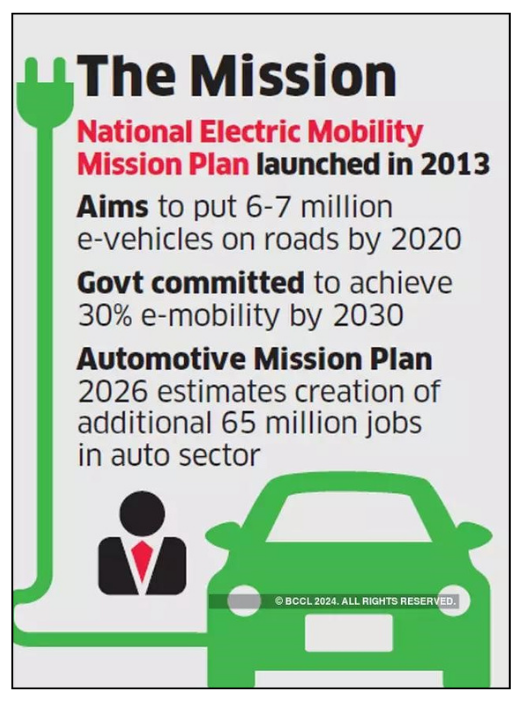
- The National Electric Mobility Mission Plan was launched in 2013, which aims to have at least 30% of vehicles on Indian roads be electric by 2030.
- It provides a roadmap for the faster adoption of electric vehicles in the country as well as their manufacturing in the country to achieve national fuel security.
- The initiative is expected to save 9500 million liters of crude oil or INR 62,000 crores.
- The NEMMP seeks to invest approximately INR 14000 crores in R&D activities and fledgling technologies, accelerate the adoption of electric cars, and establish critical infrastructure through publicprivate partnerships.
2.
Electric Vehicles Promotion via FAME and FAME II:
- The FAME India (Faster Adoption and Manufacturing of (Hybrid and Electric Automobiles) Scheme is a government incentive program in India that promotes the use of electric and hybrid vehicles.
- FAME focuses on four important areas: technology development, demand creation, pilot projects, and charging infrastructure—all of which span electric and hybrid technologies such as mild hybrid, strong hybrid, plug-in hybrid, and battery electric vehicles.
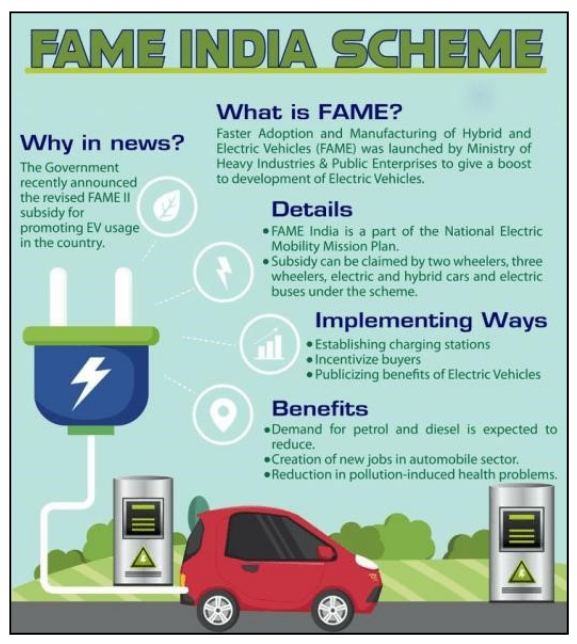
3.
PLI:
- The government has announced a Production Linked Incentive (PLI) scheme to boost domestic manufacturing and attract global companies to invest in the Indian market.
4.
Tax benefits:
- The Government has announced plans to provide an additional income tax deduction of INR 1.5 Lakh on the interest paid on loans taken to purchase electric vehicles.
5.
Electric Vehicle Policy 2024:
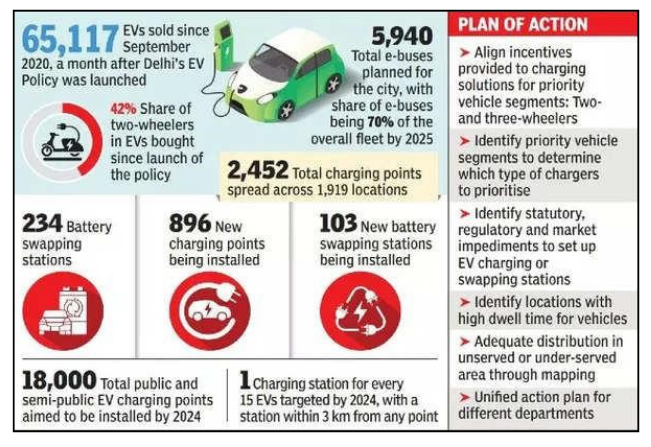
- The Union Government has approved a scheme to promote India as a manufacturing destination so that e-vehicles (EV) with the latest technology can be manufactured in the country.
- The policy is designed to attract investments in the e-vehicle space by reputed global EV manufacturers.
The policy entails the following:
- Minimum Investment required:
- Rs 4150 Cr (∼USD 500 Mn)No limit on maximum Investment
- Timeline for manufacturing:
- 3 years for setting up manufacturing facilities in India, and to start commercial production of e- vehicles, and reach 50% domestic value addition (DVA) within 5 years at the maximum.
- Domestic value addition (DVA) during manufacturing:
- A localization level of 25% by the 3rd year and 50% by the 5th year will have to be achieved
- The customs duty of 15% (as applicable to CKD units) would be applicable on vehicle of minimum CIF value of USD 35,000 and above for a total period of 5 years subject to the manufacturer setting up manufacturing facilities in India within a 3-year period.
- The duty foregone on the total number of EV allowed for import would be limited to the investment made or ₹6484 Cr (equal to incentive under PLI scheme) whichever is lower. A maximum of 40,000 EVs at the rate of not more than 8,000 per year would be permissible if the investment is of USD 800 Mn or more.
- The carryover of unutilized annual import limits would be permitted.
- The Investment commitment made by the company will have to be backed up by a bank guarantee in lieu of the custom duty forgone
- The Bank guarantee will be invoked in case of non-achievement of DVA and minimum investment criteria defined under the scheme guidelines
6.
State wise Electric Vehicle Policy:
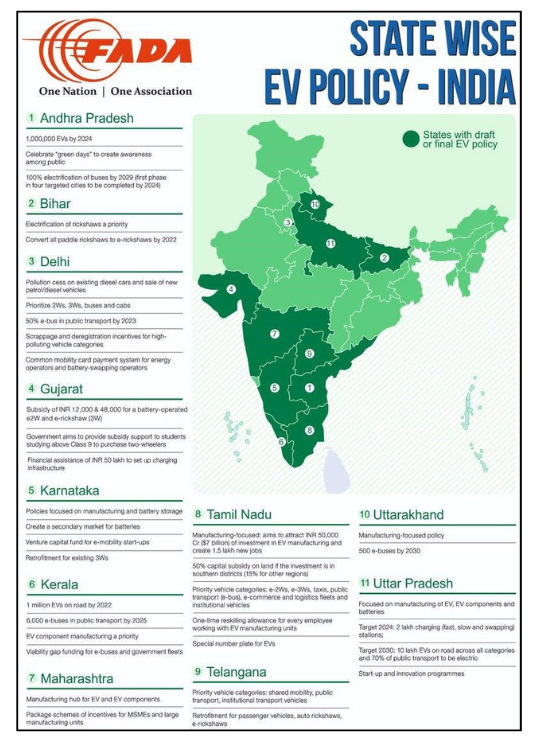
What is the relevance of the topic for UPSC CSE?
- For Prelims: Lithium, Faster Adoption and Manufacturing of Electric Vehicles (FAME) scheme, Vehicle Scrappage Policy, Production Linked Incentive (PLI) scheme
- For Mains: EVs: Advantages, Challenges, Way Forward and Government policies
Some Previous Years Prelims Questions
Q1. In the cities of our country, which among the following atmospheric gasses are normally considered in calculating the value of the Air Quality Index? (2016)
1. Carbon dioxide
2. Carbon monoxide
3. Nitrogen dioxide
4. Sulfur dioxide
5. Methane
Select the correct answer using the code given below
(a) 1, 2 and 3 only
(b) 2, 3 and 4 only
(c) 1, 4 and 5 only
(d) 1, 2, 3, 4 and 5
Some Previous Years Mains Questions
Q1. Describe the major outcomes of the 26th session of the Conference of the Parties (COP) to the United Nations Framework Convention on Climate Change (UNFCCC). What are the commitments made by India in this conference? (2021)
Q2. How is efficient and affordable urban mass transport key to the rapid economic development in India? (2019)
Some Questions for QUIZ
Q1. Consider the following statements regarding Hybrid EVs
1. They combine a conventional internal combustion engine (ICE) system with an electric propulsion system.
2. A hybrid EV’s fuel economy is 1.5-2x times higher than in conventional ICE vehicles.
3. Plug-in hybrid vehicles combine the best of both hybrid and full EVs.
How many of the above statements are incorrect? Select the correct answer using the code given below:
(a) Only one
(b) Only two
(c) All three
(d) None
Q2. Consider the following statements regarding Electric Mobility Promotion Scheme (EMPS) 2024:
1. It aims to promote the purchase of electric two-wheelers (e2W) and four-wheelers (e4W).
2. This scheme does not cover electric three-wheelers (e3W) and e-buses.
Which of the above statements are incorrect? Select the correct answer using the code given below:
(a) 1 Only
(b) 2 Only
(c) Both 1 and 2
(d) None
Some Questions for POLL
Q1. Can India reach the desired target of EV by 2030?
(a) YES
(b) NO
(c) Can’t say
Q2. Should EV be made tax free?
(a) YES
(b) NO
(c) Can’t say